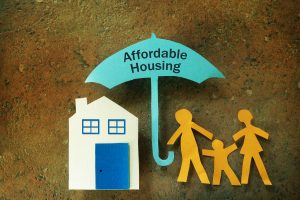 According to a new joint report from the National Association of Realtors (NAR) and Realtor.com is still short on affordable single-family homes, a number that has been lagging behind since the last recession and the move into the COVID-19 pandemic market to today as the persistent housing inventory crunch impacts middle-income buyers more than any other income bracket.
According to a new joint report from the National Association of Realtors (NAR) and Realtor.com is still short on affordable single-family homes, a number that has been lagging behind since the last recession and the move into the COVID-19 pandemic market to today as the persistent housing inventory crunch impacts middle-income buyers more than any other income bracket.
The NAR says the market needs an additional 320,000 new home listings valued at no more than $256,000 so that borrowers earning below $75,000 can get into the market. These middle-income buyers can now only afford 23% of listings in the current market, compared to five years ago when middle-income borrowers could afford about half of market listings.
“Middle-income buyers face the largest shortage of homes among all income groups, making it even harder for them to build wealth through homeownership,” said Nadia Evangelou, NAR senior economist and Director of Real Estate Research. “A two-fold approach is needed to help with both low affordability and limited housing supply. It’s not just about increasing supply. We must boost the number of homes at the price range that most people can afford to buy.”
As of April 30, about 1.1 million homes were available for sale, an increase of 5 percentage points year-over-year.
“Ongoing high housing costs and the scarcity of available homes continues to present budget challenges for many prospective buyers, and it’s likely keeping some buyers in the rental market or on the sidelines and delaying their purchase until conditions improve,” said Realtor.com Chief Economist Danielle Hale. “Those who are able to overcome affordability constraints may be increasingly drawn to newly constructed homes or to the suburbs and beyond, both of which may offer buyers more realistic opportunities for homeownership in the near term.”
But certain top-100 metropolitan areas stand out—on both sides of the spectrum.
El Paso, Texas; Boise, Idaho; and Spokane, Washington have the fewest affordable homes available for middle-income buyers. But three larger cities in Ohio—Akron, Toledo, and Youngstown—have the highest concentrations of homes middle-income homes.
“Even with the current level of listings, the housing affordability and shortage issues wouldn’t be so severe if there were enough homes for all price ranges,” Evangelou added. “Our country needs to add at least two affordable homes for middle-income buyers for every home listed for upper-income buyers.”
Click here to see the report in its entirety.






